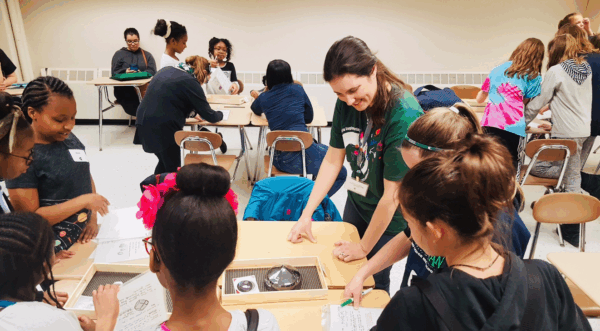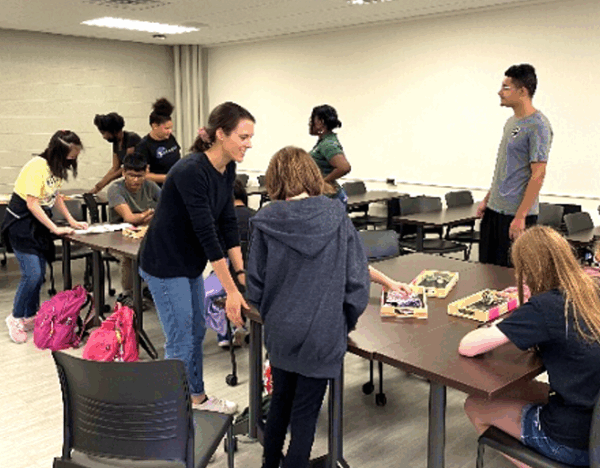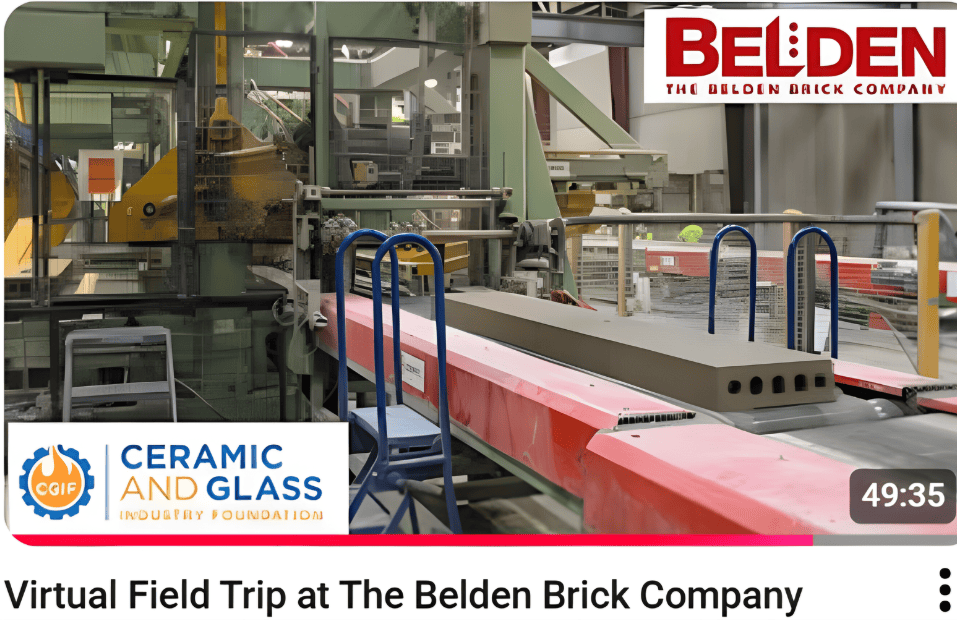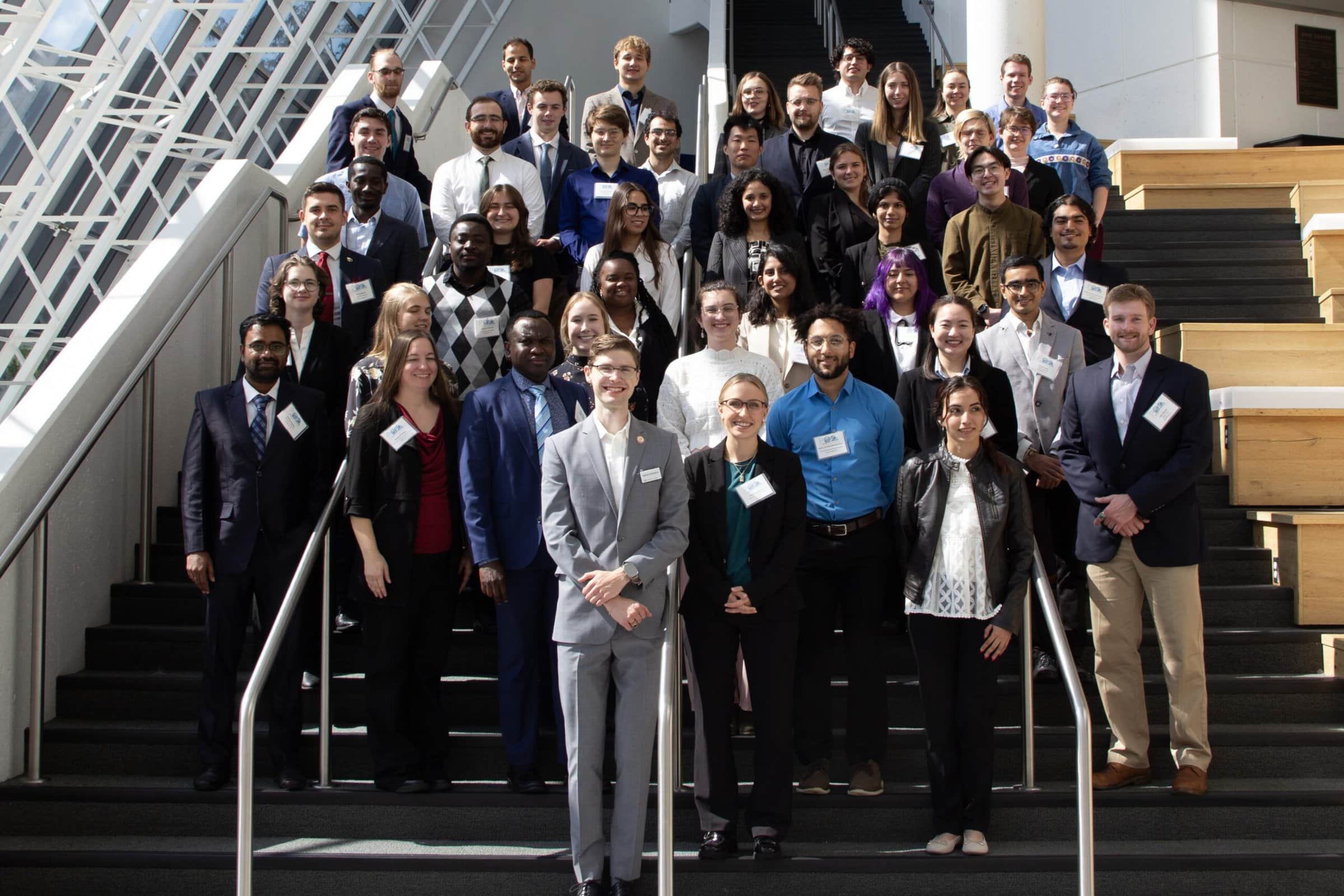
Professor Zevalkink (in green) with students examining a silicon boule at MSU’s Introduce a Girl to Engineering Day.
Over the past seven years, Dr. Alexandra Zevalkink of Michigan State University has built a dynamic and evolving outreach program that introduces students of all ages to the fascinating world of materials science. With consistent support from the Ceramic and Glass Industry Foundation (CGIF) through its project grant program, her initiatives have grown from simple crystal identification activities to sophisticated optical materials labs that are now part of the university curriculum.
This long-standing partnership began in 2018, when Dr. Zevalkink received her first CGIF project grant to develop the “Science of Crystals” outreach activity. The goal was to engage girls in materials science and teach them about ceramics and crystal growth through hands-on experiences.
“We requested funds to develop and implement hands-on activities and demonstrations for a series of annual outreach events organized by the Women in Engineering program at Michigan State University,” Alexandra Zevalkink shared.
The program was an immediate success: “Beautiful ‘rainbow’ crystals such as bismuth and labradorite were a huge hit with students, as were the colorful cubic zirconia gemstones,” she said. The activities were designed to be accessible and engaging, even for students unfamiliar with engineering.
“The major strength of this project is the broad appeal of crystals, even to students who are not necessarily interested in traditional engineering topics such as bridges, cars, or robots,” Dr. Zevalkink explained.
In 2021, the Zevalkink group was awarded a second project grant to adapt their outreach to a virtual format during the COVID-19 pandemic. They mailed Mini Materials Kits to participants and hosted Zoom sessions for MSU’s “Introduce a Girl to Engineering Day.”
“We did achieve our major objective of hosting a virtual materials science demonstration for local 4–8th grade girls via Zoom,” she reported. The kits were also used in MSU’s Engineering Summer Camp, where students explored crystal properties and shape memory alloys.
“The kids greatly appreciated all the activities and were very enthusiastic, especially to have the possibility of closely examine the crystals,” she said.

Students participate in classroom activities, where they investigate both natural and synthetic single crystals.
These early projects laid the foundation for a more ambitious initiative in 2023: the development of an Optical Properties of Materials Lab for both undergraduates and high school students.
“Our goal was to develop a new hands-on lab for undergrads and summer camp students to learn about optical properties of materials,” she explained.
With a third project grant, the team purchased a handheld spectrometer, an iPad, color filters, and light sources to create a portable, interactive lab experience. The lab was implemented in fall 2024 in MSU’s MSE 331 course.
“The lab taught the students how materials properties such as band gap, impurity concentration, etc, control whether the material is transparent or opaque, or colored,” she wrote.
Student feedback was overwhelmingly positive: “During the following semester, students told me how much they had enjoyed using the spectrometer to test different crystals,” she said “One of the students in MSE331 was even inspired to create a scaled-down version of the activity as a demo for a different course.”
Throughout all three projects, Dr. Zevalkink has continued to use and expand the original crystal collection funded by CGIF in 2018.
“We continue to use the large library of natural and synthetic crystals that were purchased using CGIF funding every winter and summer for various outreach activities, reaching hundreds of students per year,” she wrote. “Students frequently comment on how much they enjoy seeing and handling real, high-quality specimens.”
What began as a single outreach activity has grown into a multi-tiered educational program that spans K–12 outreach, summer camps, and undergraduate education. Dr. Zevalkink’s sustained collaboration with CGIF has not only enriched her own teaching and research but has also introduced hundreds of students to the possibilities of a future in materials science.
As she continues to expand and refine these programs, her work stands as a model for how long-term support and vision can create lasting impact. CGIF is proud to have been a partner in this journey, helping to inspire the next generation of materials science professionals.
Help us continue to inspire the next generation of ceramic and glass professionals. Give now at https://foundation.ceramics.org/get-involved/donate/.
Categories
- CGIF News
Related Posts
Inside brickmaking: a virtual field trip at Belden Brick
November 14, 2025
Student leadership: PCSA Annual Business Meeting 2025
October 31, 2025


